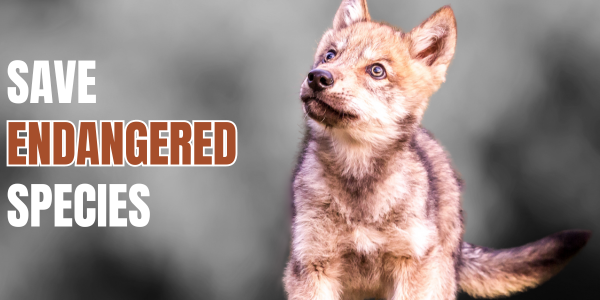Photo credit: Jenni Douglas, Flickr
Thick-billed parrot (Rhynchopsitta pachyrhyncha) | ESA status: endangered
Thick-billed parrot
The sole surviving North American parrot species, the thick-billed parrot is barely hanging on south of the border in Mexico. It disappeared from its historic range in Arizona and New Mexico due to shooting and habitat loss from logging. This intelligent, social bird prefers to travel in flocks, traversing highland pine-oak forests in search of its favorite food: pine seeds. Its calls fill the air with a sound like human laughter.
What are the threats to the thick-billed parrot?
The last confirmed sighting of a naturally occurring thick-billed parrot flock in the United States was in 1938. The parrots’ remaining stronghold in Mexico is under siege—loggers have cut down approximately 99 percent of the original high-elevation pine-oak forest that the parrots need to find suitable nesting cavities.
Perils of the pet trade
The thick-billed parrot is also threatened by the pet trade. Pet traders take young birds from the wild, cutting down nest trees to reach them and destroying rare nest locations in the process. Thousands of parrots of all kinds are illegally captured in Mexico every year. The majority die before reaching markets in the U.S. after suffering horrible transport conditions and lack of care. Many more are captured for the domestic pet trade within Mexico. The thick-billed parrot was eighth on the list of the top 10 parrot species seized at the border by the U.S. Fish and Wildlife Service (FWS) from 1995 to 2005.
An attempt at reintroduction
An attempt at reintroducing the parrot into southeastern Arizona in the 1980s and 1990s apparently failed: about a fourth of the reintroduced birds were captive-bred and, thus, their parents couldn’t teach them how to effectively flock, forage, or avoid predators. The remainder of the flock—wild-caught birds liberated from the pet trade—suffered further setbacks from drought and fire. Though scientists believe reintroduction could be successful if this highly social bird could be released in large enough numbers, only 88 birds were ever released, and the reintroduction attempt was terminated in 1993. The reintroduced flock was not seen after 1995.
What WildEarth Guardians is doing to preserve the thick-billed parrot
The wild population of thick-billed parrots in Mexico continues to decline. Scientists estimate that only approximately 1,760 birds remain. Recovering the parrot population will require a consistent, dedicated effort from the United States government, in collaboration with Mexico, to protect pine forest habitat and enforce restrictions on the pet trade. Guardians fought to get the parrot a recovery plan under the Endangered Species Act, and after a 37-year delay, the FWS finally released a plan in July 2013. Though the difficulties of bringing this bird back to its historic range are evident, we are working to one day see the return of these stunning birds to the forests of the southwestern United States where they once flew.
Historical Significant Actions
U.S. Fish and Wildlife Service releases final Recovery Plan Addendum for the thick-billed parrot July 2013
WildEarth Guardians comments on the Draft Recovery Plan Addendum August 2012
U.S. Fish and Wildlife Service releases a Draft Recovery Plan Addendum for the thick-billed parrot June 2012
WildEarth Guardians and the U.S. Fish and Wildlife Service reach a settlement in the thick-billed parrot case December 2010
WildEarth Guardians files suit to obtain recovery plan for the thick-billed parrot February 2010
Wildlife Press: Thick-billed parrot
After 37 Year Delay Thick-Billed Parrot to Get ESA Recovery Plan
Court Settlement Requires Final Recovery Plan by June 2013
Contact: Jay Tutchton 720-301-3843
